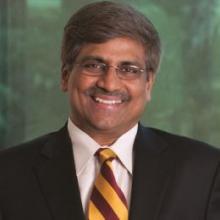
Publication Type:
Authors:
Source:
IEEE conference on the Automatic Face and Gesture Recognition, Seoul, Korea (2004)Abstract:
Complex human motion (e.g. dance) sequences are typically analyzed by segmenting them into shorter motion sequences, called gestures. However, this segmentation process is subjective, and varies considerably from one choreographer to another. Dance sequences also exhibit a large vocabulary of gestures. In this paper, we propose an algorithm called Hierarchical Activity Segmentation. This algorithm employs a dynamic hierarchical layered structure to represent human anatomy, and uses lowlevel motion parameters to characterize motion in the various layers of this hierarchy, which correspond to different segments of the human body. This characterization is used with a na{\"ıve Bayesian classifier to derive choreographer profiles from empirical data that are used to predict how particular choreographers will segment gestures in other motion sequences. When the predictions were tested with a library of 45 3D motion capture sequences (with 185 distinct gestures) created by 5 different choreographers, they were found to be 93.3% accurate.



